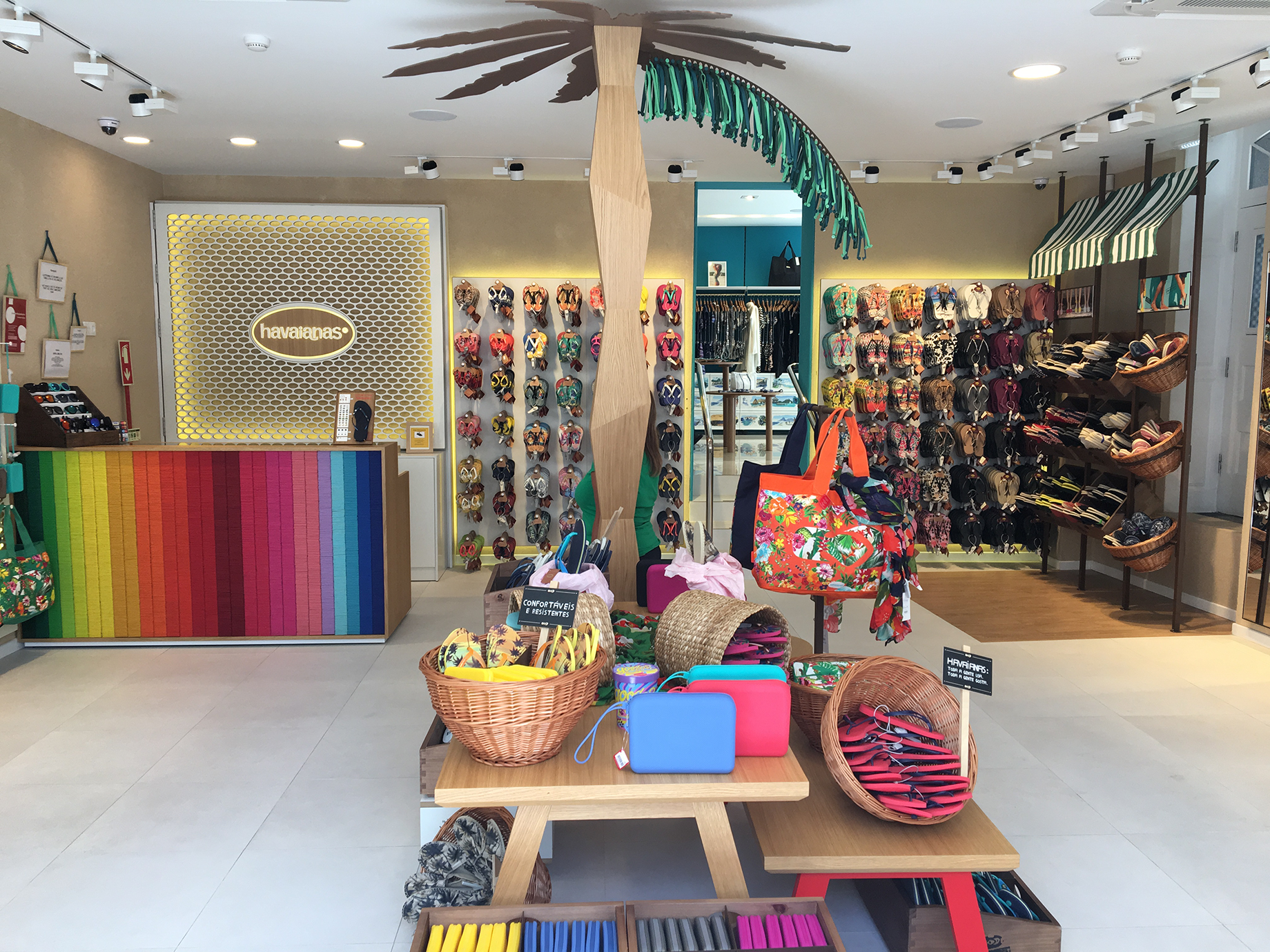The once-lowly flip-flop has come a long way, thanks in part to such companies as Havaianas, one of Brazil’s most iconic consumer brands. Havaianas began manufacturing its rubber flip-flops in 1962 as an affordable product for consumers with low disposable income. But the footwear’s appeal has extended far beyond its utilitarian roots.
“For about 32 years, Havaianas flip-flops were available in only one style and four colors and sold in down-market channels,” said Carla Schmitzberger, director of the sandals division at Alpargatas, Havaianas’ parent company. “As sales volumes started to decline between 1988 and 1993, we realized that the brand had become a commodity, with only functional benefits and no emotional appeal.”
The brand was relaunched in the mid-1990s with new styles and colors, boosted by a marketing campaign starring such global celebrities as actress Gwyneth Paltrow and Brazilian supermodel Gisele Bündchend. The result was a sharp sales increase from about 90 million pairs in the mid-1990s to 170 million by 2007 worldwide, says Schmitzberger.
But retailers that carried the brand did not have enough space to display the brand’s annual rollout of 150 styles of flip-flop — not to mention its other products, including summer clothing, and such accessories as beach bags, cellphone cases, hats, key chains, sunglasses, towels and wallets. So in 2008 the company opened its first Havaianas store in Brazil, followed by a second a year later, in São Paulo’s ritzy Jardins neighbourhood. By the end of last year, the retailer had 470 stores in Brazil and 175 more in Asia, Europe and the United States. (The stores are a combination of corporate-owned and franchised).
“The opening of a new channel for an already well-distributed product did not cannibalize any other channel, but rather grew the overall business by strengthening the brand appeal behind a much larger product diversity,” said Schmitzberger.

Flip-flops for everyone Havaianas’ stores in Brazil carry much besides flip-flops, including summer clothing, and bags, hats and other accessories
Meanwhile, its flip-flops have not lost their appeal, despite an overall decline in flip-flop sales overall. (In the US, flip-flop sales were down by 17 per cent during the six months ended this past July versus the year-ago period, according to NPD, a US-based market research firm.) Last year Havaianas sold 7.4 per cent more pairs of flip-flops than the year before.
“Havaianas has stayed true to its brand DNA with its product extensions, which is extremely important,” said Beth Goldstein, NPD’s industry analyst for fashion footwear and accessories.
São Paulo-based Alpargatas, which was founded in 1913 and is now Brazil’s oldest publicly traded company, manufactures and distributes other shoe brands, which its why it claims to be Latin America’s biggest shoe seller, with annual revenues in excess of about €840 million.
In the US, Havaianas’ 13 stores are in California, Florida, Las Vegas and New York, under a variety of formats, including larger and compact stores, kiosks and seasonal pop-ups.
“Alpargatas plans to continue to grow significantly in Brazil, our home market, as well as in other key markets in Latin America, like Argentina and Colombia,” said Schmitzberger. “We continue our plans to expand in the US, as well as grow in the Asia-Pacific region, where we see a significant opportunity. In Europe we will focus on some of our less mature markets, like Greece, Germany and Austria.” New markets entered since last year are Canada, Croatia and Slovenia.
Overseas sales account for 25 per cent of the brand’s total and grow each year by about 15 per cent. The goal is for the international market to generate some 40 per cent of total sales by 2020, the company says.
Globally, a consumer spends on average of €18 during a visit to a Havaianas store. Prices of a pair of flip-flops range from €8 to €20, depending on the market and style.
The company looks for high-traffic shopping centres as well as high-street stores.
Leasing inquiries may go to retail director Eva Gimeno, at eva.gimeno@alpargatas.com.
By María Bird Picó
Contributor, Shopping Centers Today


